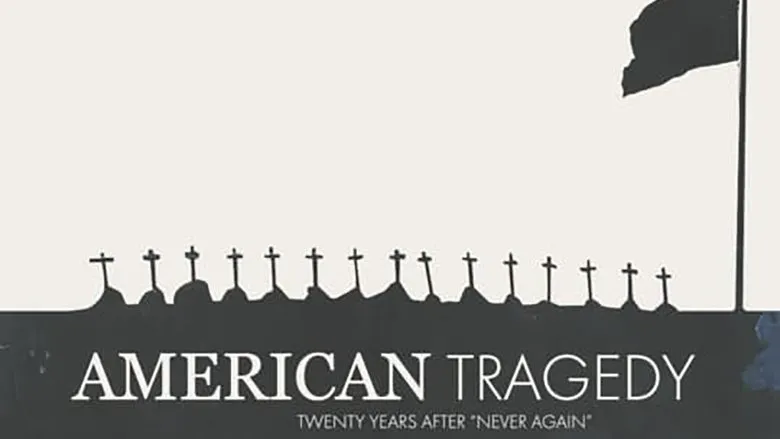Behind the Lens of “American Tragedy”: Unraveling a Mother’s Unspeakable Grief
The documentary “American Tragedy” stands as a poignant and gut-wrenching exploration into one of the darkest chapters in modern American history: the Columbine High School massacre. Far from being a mere recounting of facts, this film dares to venture into the most intimate and painful space imaginable – the mind of a perpetrator’s mother, Sue Klebold. Our role as critics, in this instance, is to consider not just the finished product, but the sheer bravery and arduous journey that went into bringing such a profoundly personal and culturally resonant narrative to the screen.
An Unprecedented Confession: The Genesis of the Film
The heart of “American Tragedy” beats with Sue Klebold’s unflinching narrative. What compelled a mother, almost two decades after her son Dylan devastated an entire community, to step forward and share her story? The film’s inception lies in a profound human need for understanding and, perhaps, a desperate attempt at healing. Instead of a sensational exposé, the documentary emerges as an act of raw courage from Sue, who chooses to grapple publicly with the bewildering paradoxes of her son’s life: from the “Sunshine Boy” she knew to the architect of unimaginable horror.
Imagine the countless hours spent bringing this personal memoir to life through film. It isn’t just an interview; it’s a meticulously crafted narrative where Sue Klebold herself becomes the primary storyteller. The film’s producers and director, by trusting implicitly in her voice, create an atmosphere of profound empathy, allowing viewers to walk alongside her as she revisits memories, confronts her failures, and grapples with the unanswerable “why.”

Behind the scenes, the challenge must have been immense: how to present a story that implicates a beloved son in such a horrific act, without glorifying or absolving. The filmmakers achieve this by maintaining a respectful distance, allowing Sue’s authentic struggle to occupy the screen. They let her painful self-interrogation drive the narrative, a brave choice that deepens the film’s impact far beyond mere recollection.
Navigating the Labyrinth of a Troubled Mind
Central to “American Tragedy” is Sue Klebold’s attempt to chart the insidious progression of her son’s mental state. The film meticulously weaves together fragmented memories, piecing together the subtle shifts from a cheerful child to a teenager consumed by anxiety and depression. This aspect of the documentary required not only Sue’s honesty but also perhaps archival footage, photos, and an empathetic directorial approach to illustrate the stark contrast between family memories and eventual reality.
The filmmaking process clearly prioritizes Sue’s introspection, creating a powerful sense of intimacy. Her reflections on Dylan’s declining mental health and her retrospective realizations about her own parental blind spots form the emotional backbone of the documentary. It’s a testament to the film’s production team that they could guide Sue through such painful self-analysis, resulting in a narrative that is both deeply personal and universally resonant for any parent grappling with unforeseen challenges in their children’s lives.
Beyond the Individual: A Critical Look at American Culture
One of the documentary’s most impactful aspects is its courage to expand beyond the personal tragedy and question broader societal influences. Sue Klebold’s narrative extends to scrutinize American culture’s pervasive embrace of violence in media and the intensely competitive academic environments that can breed isolation and despair.

The choice to include Sue’s speculations about how media consumption might exacerbate fragile mental states marks a significant stylistic decision for the documentary. It elevates the film from a personal memoir to a critical societal commentary. This would have required careful archival research and a deft hand in editing to seamlessly integrate these wider cultural observations within Sue’s personal journey, reinforcing her haunting question: Can a relentless bombardment of hate push vulnerable young minds “over the edge”?
The Echoes of April 20, 1999: Survivors’ Voices
While Sue Klebold’s perspective is paramount, “American Tragedy” wisely incorporates testimony from surviving students, teachers, and law enforcement officials. This inclusion broadens the scope of the tragedy, moving beyond the family’s internal struggle to encompass the wider devastation and collective trauma.

For the documentary team, engaging with survivors and officials would have been a sensitive and painstaking process, requiring immense empathy and trust-building. Their personal accounts serve as stark reminders of the cost of the event, grounding Sue’s philosophical reflections in the lived agony of those directly affected. The interweaving of these narratives ensures that the film never loses sight of the immense human toll, providing necessary context and a chilling counterpoint to Sue’s deeply personal search for meaning.
“If Love Could Have Stopped Columbine”: A Haunting Legacy
The poignant question Sue Klebold poses – “If love could have stopped Columbine” – encapsulates the profound existential crisis at the heart of the documentary. It’s a testament to the film’s profound depth that it allows this raw, unanswerable question to hang in the air, transforming a personal tragedy into a universal contemplation on the limits of human understanding and the darker corners of the psyche.
“American Tragedy” is not just a documentary; it is an act of communal healing and a plea for deeper socio-psychological introspection. Through Sue Klebold’s unfiltered grief, relentless self-awareness, and profound desire to prevent future tragedies, the film offers a rare, difficult, but ultimately crucial window into the genesis of an American nightmare. The true “behind the scenes” story of this documentary is simply the sheer human courage required to make it.